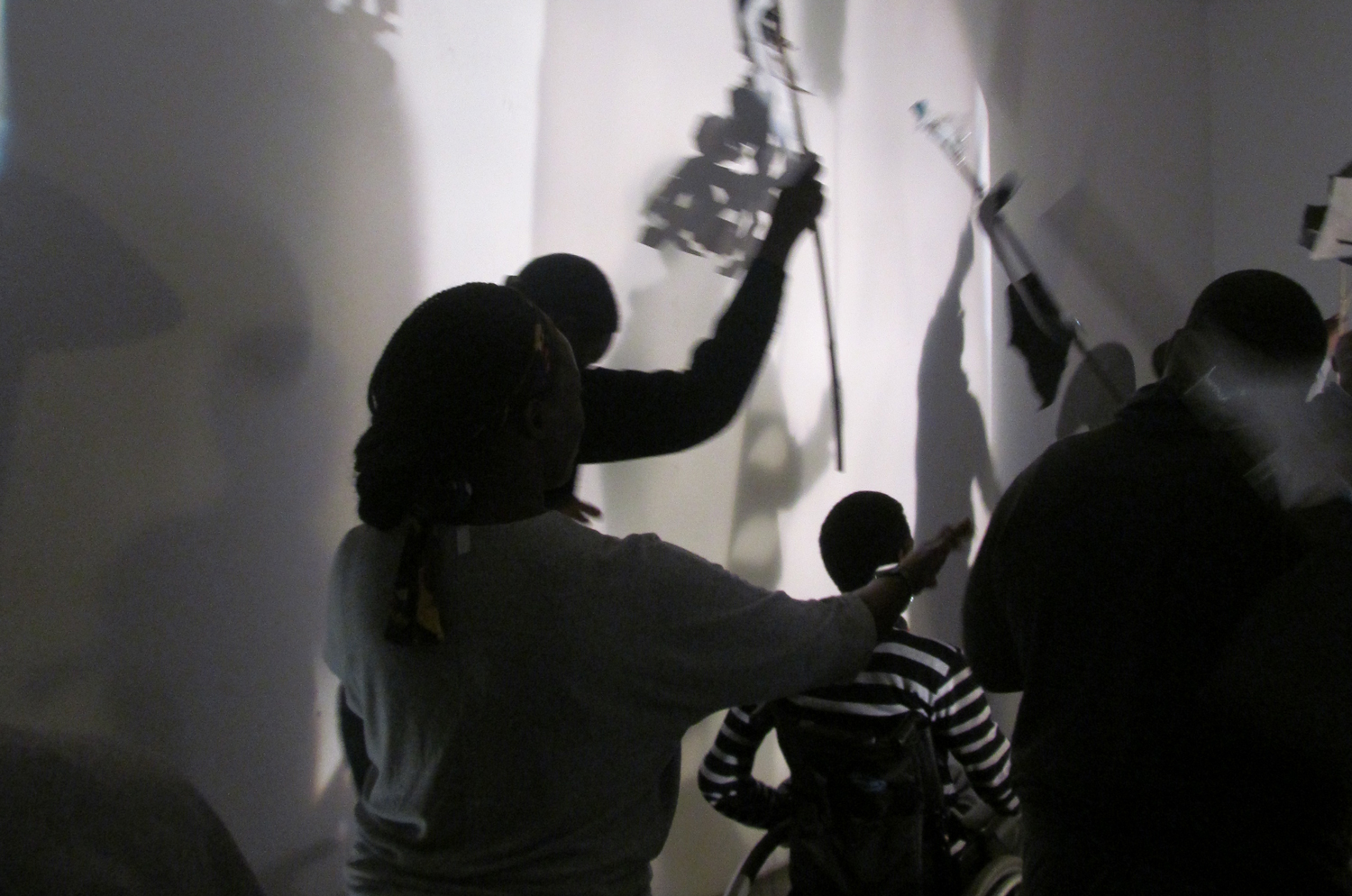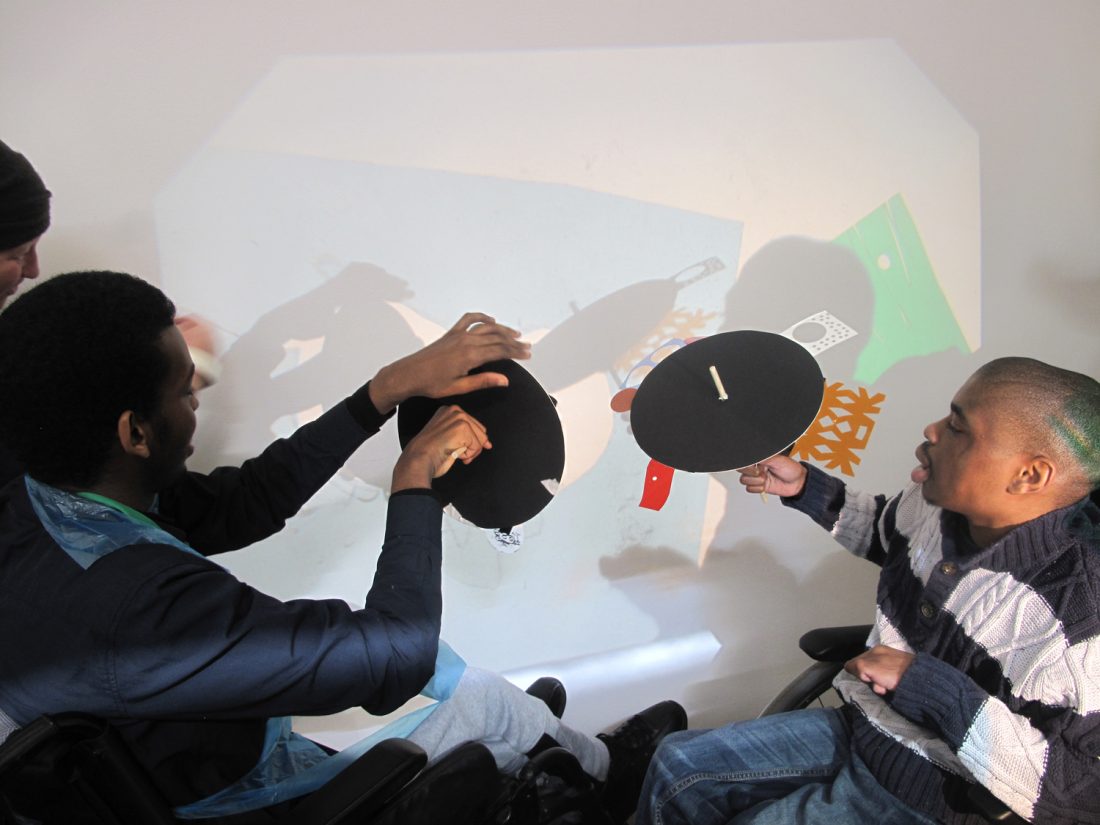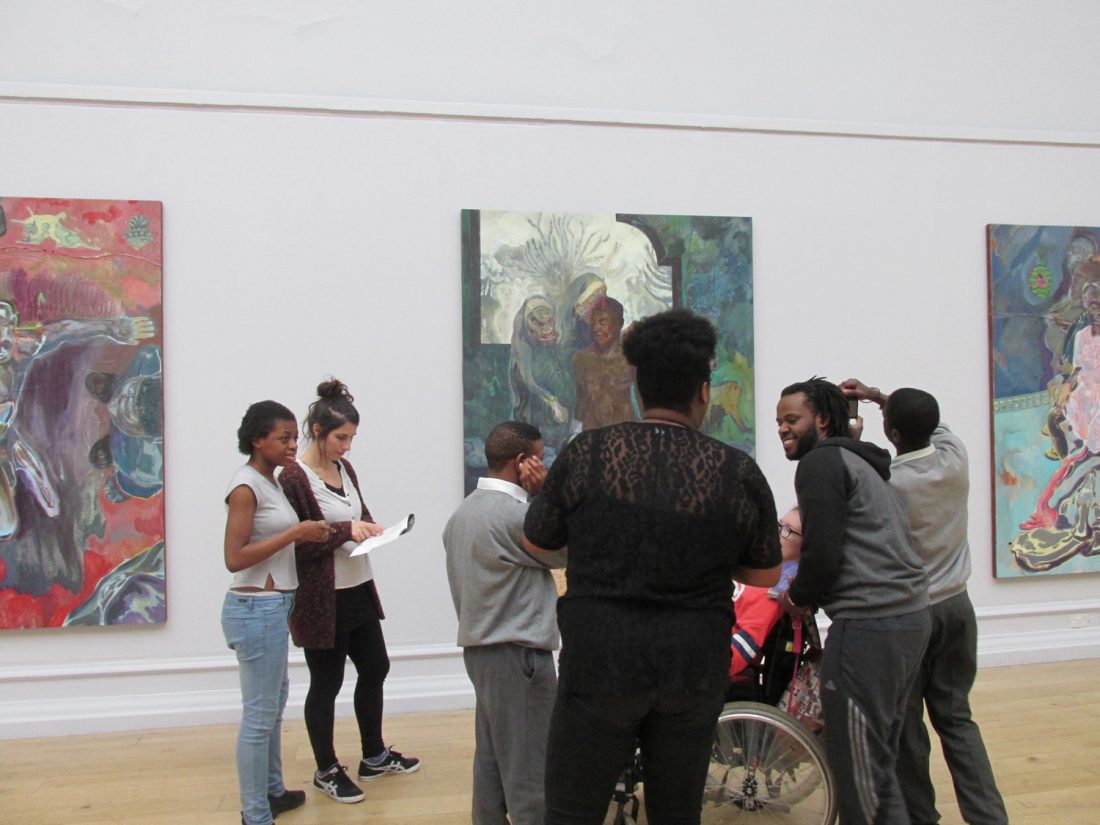
Image: Workshops with Helen Rousseau.
For the past three years, the South London Gallery has been working in partnership with Tuke School for pupils with special educational needs and disabilities (SEND), and artist Helen Rousseau. As part of the Start Programme, they have worked together to facilitate a tailored and responsive art project. Over this time, Rousseau has developed a hands-on and sensory approach, collaborating with teachers to ensure the project connects with the pupils and their interests. In this Q&A, Adejumoke Oke gives an insight into the project from a teacher’s perspective.
1. What were your hopes/expectations when you first visited the gallery? Have these changed or evolved over the course of the project?
My hopes were that all students with very different abilities would be involved in some way. I wasn’t sure how successful this would be, as they are hugely varied in their abilities, from students with profound and multiple learning difficulties (PMLD), to higher functioning students with autism spectrum disorder (ASD). But I longed for them all to have some sort of involvement, no matter how basic.
Then I saw how perceptive and willing to adapt Helen Rousseau was, as well as able to change so quickly, to make the sessions accessible to all students, which was great to see.
2. One of the changes we made after the first programme was for all the sessions to take place at the SLG, rather than in-school. What are the benefits and what are the challenges of working at the SLG rather than in-school?
This enabled the students to build up their enrichment, to experience art in the context of a gallery. The issue was the logistics. Transferring students from one space to another can be tricky, for some students it’s easier to stay in school. But we’re so keen for them all to come out of school, it’s so important for them to see the outside world, they won’t be at school forever and we need to prepare them for this.
It also enabled the students to work with other individuals outside school, people that were new to them.
For staff, we just need to be aware of how the students might react to being outside. For instance, at a recent gallery session one pupil with ASD became quite distressed and showed this by moving around the studio very fast. It may have been being at the gallery that triggered it, or just his response to something he was feeling. We need to be able to cope with this, and were able move the other students into a garden space, so that he could have the space he needed to settle.
For most, being at the gallery is a wonderful experience.
3. In what ways do the artworks produced in the sessions have value for you and the students?
It’s important that the pupils see what they produce. They’re aware of what they make. It gives them confidence, a sense of ownership. They can see that they are part of this project and they have contributed. For PMLD/sensory students, they can have that concrete experience.
As a school it means that we can show other people what our students are capable of producing.
4. Has what we have done and made within the project impacted on your own approach to creative work back in school? If yes, in what ways?
Definitely. For one PMLD student, it’s completely changed what I would usually have done with her in art. She enjoys auditory experiences and particularly her rainmaker. In Helen’s session, we had a canopy or umbrella set-up, with the pupil underneath it, and were dropping rice onto the canopy. She loved the sound, it made sense to her and she derived enjoyment from that. So it’s changed what I think of to do, things that I can bring to them for art.
Also for pupils that took on a level of responsibility in the art project (some students came back as support or peer mentors in the group), this responsibility carried back into school. This is an approach we often use, but it re-enforced their level of responsibility.
5. What have been the outcomes that did not take physical form? Do these have value beyond the project, in what way?
For other students within the school, seeing what their older peers were involved in and doing encourages them in their own involvement in the future, a sense of what they can be a part of and aspire to as well.
Other members of the school community are impressed by it as well, staff are always impressed by the students and are very proud of what they achieve. We have high expectations of them.

Image: Workshops with Helen Rousseau.
6. How do you understand your role when you are working collaboratively with a student?
It depends a lot on the student you’re working with. The more able can just get on with it without support. Others need a lot of prompting, working hand-over-hand. Or some just need an initial prompt. Others we work side-by-side with and offer guidance. For PMLD students, we might immerse them completely in an experience, for example audible elements or stimulus. So it varies, from students working independently, to immersive responses.
We also have learning intentions for students. For example, it could be to follow an instruction by the third time of being asked, or to be able to independently collect three resources for an art session. This can direct what we’re trying to facilitate as an outcome.
7. How do you find a place from which to start? What kinds of things do you look for, or offer, as a starting point?
We try to start from things that the students are interested in, things that motivate them and will get a quick response. Then it’s really important to move along from that, for them to try new experiences too. We support the students, but we allow them to take the lead.
8. In what ways do you support students to facilitate their authorship of the artwork?
There is always the concern that if staff don’t work collaboratively with the students, that they won’t have anything to show from the session. But sometimes it’s about them being involved, not necessarily having anything physical to show for it. We try to find other ways to show students’ involvement, we take a lot of photos.
There is a conflict as staff, you want them to see something concrete that they have made, to have pride in that. But sometimes this isn’t the best learning outcome.
10. If we see the artwork evidence of a making process what kinds of qualities, values and strengths do you think it speaks of?
How students communicate, learn, or work with each other.
Work from this year’s project will be on show as part of the Schools’ Exhibition: Start Programme from Wednesday 11 July – Friday 13 July.

Image: Workshops with Helen Rousseau.